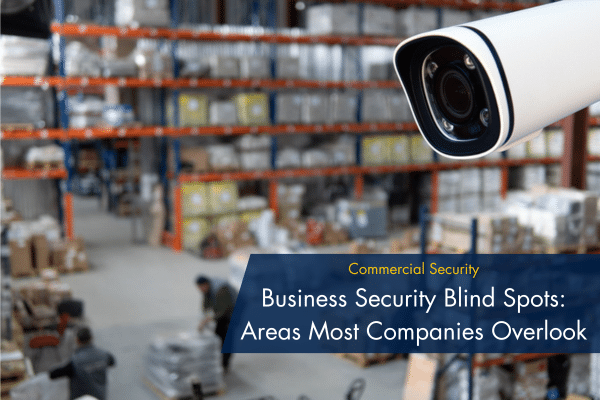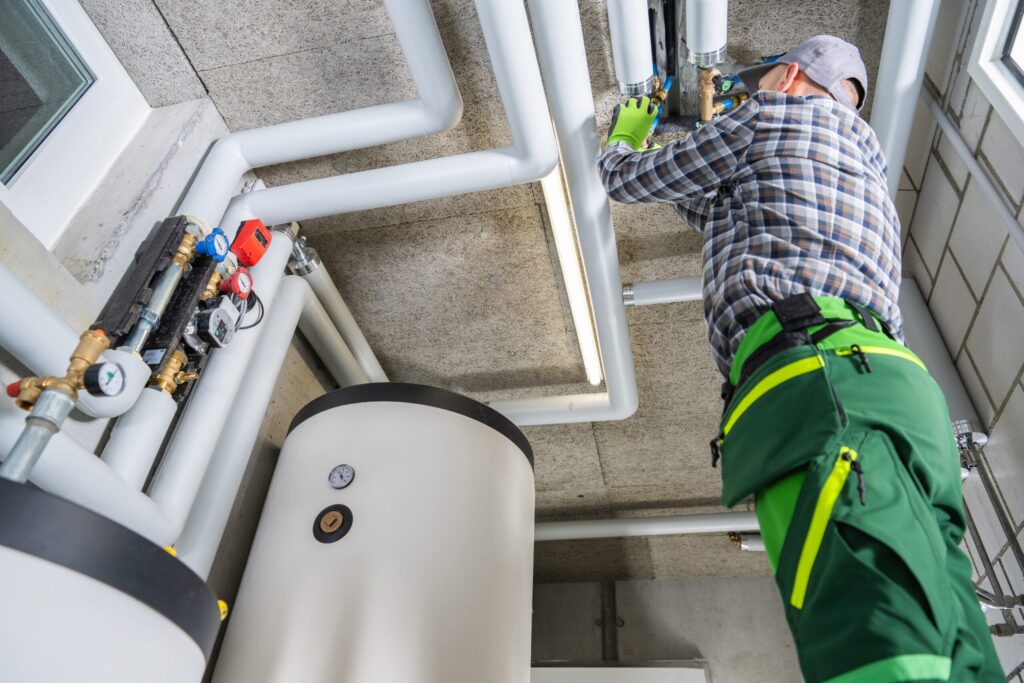
IS YOUR BUSINESS TRULY SECURE? THINK AGAIN.
You’ve installed the alarm system. You’ve mounted the cameras. Your security boxes are checked, right?
Not so fast.
In the world of business security, what you don’t see can hurt you most. While your competitors focus on obvious protection points, sophisticated threats are targeting your blind spots—the vulnerable areas hiding in plain sight.
We have identified seven critical gaps that leave businesses exposed daily. These aren’t theoretical risks—they’re the actual entry points used in real commercial breaches happening right now.
Let’s pull back the curtain on the security vulnerabilities most companies miss until it’s too late…
 Employee Access Points
Employee Access Points
Most companies focus on front entrances while neglecting secondary doors, loading docks, and emergency exits. These often lack proper monitoring or access controls, creating vulnerable entry points. Installing card readers or mobile credential systems at ALL access points is essential.
The Real-World Risk
Consider this: At a Houston manufacturing facility last year, thieves bypassed a sophisticated front entrance system and instead entered through an employee smoking area door—left unlocked for staff convenience. The result? $87,000 in stolen equipment and intellectual property exposure.
Digital-Physical Security Gaps
In today’s connected workplace, your digital security and physical security aren’t just neighbors—they’re roommates. Yet most businesses treat them like strangers, creating dangerous blind spots where these systems intersect.
The Danger Zone
Picture this: Your IT team secures your network with military-grade encryption while your CCTV cameras—connected to that same network—use factory-default passwords anyone can find online. This disconnect creates a vulnerability that renders both systems compromised. What about your server rooms? Your entire digital operation housed in closets protected by basic door locks.
After-Hours Protocols
The workday ends. Employees file out. Lights dim. And suddenly, your business enters its most vulnerable period—often with the least protection. Most businesses invest heavily in daytime security when team members are present, but drastically under protect their facilities during the critical overnight hours when 60-70% of commercial burglaries occur, fire and water emergencies go undetected for hours, temperature fluctuations threaten sensitive equipment and inventory and unauthorized access attempts spike.
The False Sense of Security
That basic alarm system you installed years ago? It might be giving you a dangerous illusion of protection. Consider these sobering realities:
- Standard motion detectors can’t distinguish between broken pipes and broken windows
- Alarm signals without video verification result in delayed police response
- Power outages can disable outdated systems entirely
- Exterior threats often go undetected until they become interior breaches
 Internal Threats
Internal Threats
While external threats get attention, employees and contractors with legitimate access cause many security breaches. Internal threats arise from individuals with access to the system, including employees, residents, or temporary personnel. These threats include insider tampering, where authorized users disable or manipulate alarms for illicit purposes, and accidental compromise, where human errors like sharing credentials weaken security. Unauthorized access happens when temporary visitors, like contractors, take advantage of what they know about the security system.
Outdated Technology
Many businesses install security systems then neglect updates for years. That security system installed five years ago? It might as well be from another century.
The False Economy of “If It’s Not Broken
Many businesses operate on the dangerous assumption that security technology is a one-time investment. They install systems and then leave them untouched for years, creating critical vulnerabilities such as outdated firmware, analog cameras that capture footage too grainy for identification purposes, access control systems with easily duplicated credentials, alarm panels lacking cellular backup when internet connections fail and systems without remote management capabilities during emergencies.
Lack of Security Culture
A lack of security culture, where individuals and teams don’t prioritize or understand security practices, can lead to increased vulnerabilities and risks for organizations, potentially resulting in data breaches and other security incidents.
Picture this: You’ve invested in top-notch security equipment, but an employee holds the door open for a stranger because “they seemed nice.” All your expensive technology just became useless.
 Utility and Maintenance Areas
Utility and Maintenance Areas
Mechanical rooms, IT closets, and maintenance areas often have minimal security despite housing critical infrastructure. These areas need the same level of protection as your main operations.
By addressing these blind spots, businesses can create truly comprehensive security that protects their people, property, and operations from all angles. Contact us for a complete security assessment to identify your company’s unique vulnerabilities.




Recent Comments